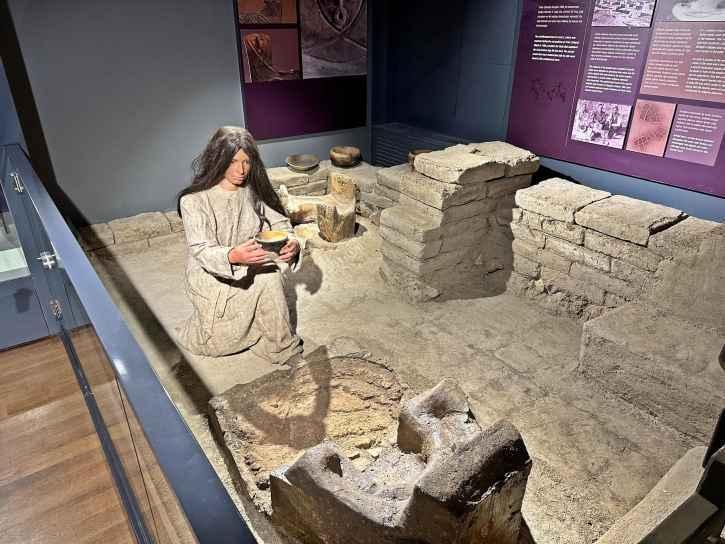Tunceli Museum second best in Europe
TUNCELİ

Tunceli Museum, the first and only museum where rituals, artifacts, information and documents belonging to the Alevism belief are exhibited, has been selected the “second best museum in Europe” in the European Museum Academy Luigi Micheletti Awards, to which 48 countries applied.
The Luigi Micheletti Award is the European prize for innovative museums in the world of contemporary history, industry and science. It is one of the leading activities of the Luigi Micheletti Foundation.
Governor Bülent Tekbıyıkoğlu stated that they were proud of the award and said, "There is an Alevi belief exhibition that keeps our belief in Tunceli and Horasan. In this respect, this museum differs from others and attracts the attention of European museum organizations."
The museum, covering an area of 5,805 square meters, has Alevism, archaeology, ethnography sections and a library, unraveling the pages of history in front of its visitors.
The historical museum building, which was built as a military barracks in 1935 with Austrian and German architectural style, was registered by the Erzurum Cultural and Natural Heritage Preservation Regional Board due to its Early Republican-era Structure feature. It was allocated to the Culture and Tourism Ministry, General Directorate of Cultural Heritage and Museums to serve as the Tunceli Museum in 2015 and converted into a museum in 2020 after restoration works.
Tunceli Museum consists of six halls where the life adventure of humanity from prehistoric times to today is depicted with informational texts, visuals, dioramas and animations.
Approximately 2,000 historical artifacts, from the Paleolithic to the Republican era, are on display in the Tunceli City Museum, one of Türkiye’s most important ethnography, archaeology and faith museums.
The most striking of the artifacts is 5,000-year-old sacred hearth unearthed from Pulur Mound, located on a natural hill in the northeast of Sakyol village, which remains under the Keban Dam Lake. The sacred hearth is one of the first symbols of the Alevi culture in Anatolia. This hearth, which is called “sacred” because of the depiction of the family theme of five people, consisting of mother, father and children, reveals the family relationship and that this relationship has remained unchanged throughout the historical process until today.
The most important feature that distinguishes Tunceli City Museum from other museums is that it has sections where Alevism rituals are exhibited. In the museum, the genealogies of the tribes of the Alevi faith, ram-headed tombs, the whirling, which are the most important rituals in Alevism, are also visually exhibited. Apart from all the information about Alevism, Alevi-Bektashi rituals, which were inscribed on the “Intangible Cultural Heritage List” by UNESCO in 2010, are exhibited.
Last year, 67 countries applied to the Micheletti Award competition, organized by the European Museum Academy. Tunceli City Museum was among these museums and made it to the finals and received a gratitude certificate.
This year, museums from 48 countries applied for the European Museum Academy Luigi Micheletti Competition. Only Tunceli Museum from Türkiye joined the competition. On the 100th anniversary of the Turkish Republic, the museum won the Luigi Micheletti Award, which is given to innovative museums in the world of contemporary history, industry and science.
In the award competition, the 10-person jury said the following for Tunceli Museum, "There was a clear structure of thought in all the exhibitions, each with its own story structure and its own atmosphere. Especially the exhibition on the Alevi belief culture had an important demonstration and identity role in the society. There is no doubt that the museum makes a stimulating contribution to society. It is an excellent museum and sets an example for many museums in terms of its approach [vision, mission, strategy], role and storytelling.”
















